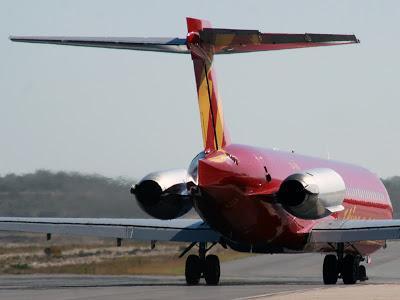
One up, one down...normal for ailerons, not elevators.
It is commonly known that there is something unusual about the elevators on an MD80 that causes them to move in opposite directions while sitting on the ground. There are a lot of people out there who know just enough about aerodynamics and aircraft systems to know this isn't right, so I regularly find myself engaged in an MD80 systems lesson with a concerned passenger. What you may not know, is that the elevators are not the only unusual flight control system on the McDonnell Douglas MD80.A small amount of aeronautical knowledge is needed to fully appreciate this post, so allow me to provide a quick lesson. I'll keep it short and simple...consider this Flight Controls 101.
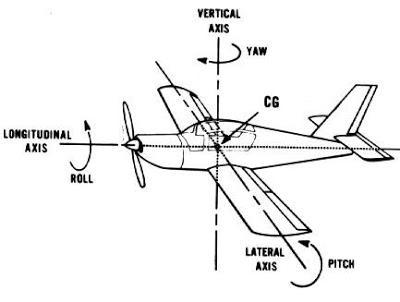
figure 1
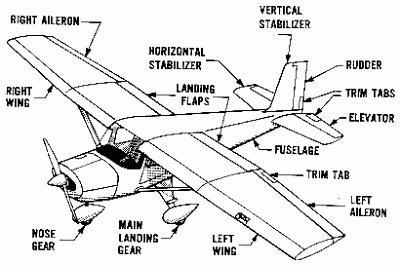
figure 2
An airplane moves on three axes, longitudinal, lateral and vertical (figure 1). Elevators, located on the trailing edge of the horizontal stabilizer, control movement on the lateral axis (pitch) as the pilot pushes or pulls on the flight controls. Pull back and the houses get smaller, push forward and the houses get bigger. Ailerons, located on the trailing edge of each wing, move opposite of each other and control the aircraft on its longitudinal axis (roll). This part is very much like driving a car. When the pilot moves the controls to the left, the aileron located on the right wing lowers while the aileron on the left wing rises. This opposite movement causes the aircraft to roll to the left. The rudder, located on the trailing edge of the vertical stabilizer, controls the aircraft on its vertical axis (yaw). Two pedals located at the pilot's feet move the rudder to the left and right in order to pivot the aircraft. Rudders serve a number of other purposes, but when airborne, rudder inputs help coordinate turns and aid in aligning the aircraft with the runway during crosswind operations (find the ailerons, elevators and rudder in figure 2).
Now for the rest of the story...
With most conventional airplanes, flight control inputs from the pilot, whether stick, control wheel or joy stick, result in immediate and direct movement of the flight control surfaces. On some planes, a combination of cables and pulleys directly manipulate flight control position, while other planes have hydraulically boosted or electrically controlled flight control surfaces that may require the involvement of on-board computer systems. Either way, and here is how the MD80 differs from the rest, the pilot usually has control over the position of all flight control surfaces, whether airborne or on the ground. I'm sure there are a few exceptions, but this is the norm.
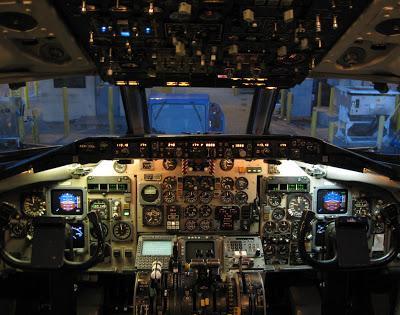
MD80 cockpit
Rudder...
However, on the MD80, the rudder is the only primary flight control directly controlled by the pilot. Controlling the airplane on its vertical axis, rudder movement is accomplished with a two-way cable system from the rudder pedals that is mechanically controlled and hydraulically actuated in normal conditions. When the pilot steps on the rudder pedal, the rudder moves. The elevator and ailerons aren't quite that simple.
Ailerons...
The aileron and elevator systems are a little unusual in that control inputs from the pilot move small control tabs, not the actual control surfaces. Sitting on the ground, if the pilot of an MD80 moves the control wheel left and right, the control tabs move, not the ailerons. On most airplanes, if a pilot walked out onto the ramp and physically moved an aileron up and down, the control wheel in the cockpit would move as well. Not so on the MD80.
When airborne, aerodynamic forces on the control tabs move, or "fly," the ailerons into the position commanded by the pilot and control the airplane along its longitudinal axis. Cockpit control wheels are connected via pulleys and cables to the aileron control tab and are linked together by a torque tube that causes both control wheels to move together. The ailerons are also connected in such a way that each aileron must respond to movement of the opposite aileron...if one goes up, the other goes down. So at least they look normal from a distance. The elevators are another story.
Elevators...
Movement along the MD80's lateral axis (pitch) is controlled by of a pair of elevators attached to the trailing edge of the horizontal stabilizer. During normal flight, the elevators are controlled by an aerodynamic boost system that operates in the same way as the ailerons where a single control tab on each elevator "flies" it into the position commanded by the control wheel. As with the ailerons, when the pilot moves the control wheel forward and aft, the elevator does not move. Instead, only the control tabs are in motion. Each control tab is driven by an independent two-way cable system from the corresponding control column in the cockpit. However, unlike the ailerons, the elevators are not connected to one another. The elevators are weighted in such a way that they typically sit in a nose-up position, but since they are free floating and not interconnected, it is not uncommon at all to see them move in completely different directions.
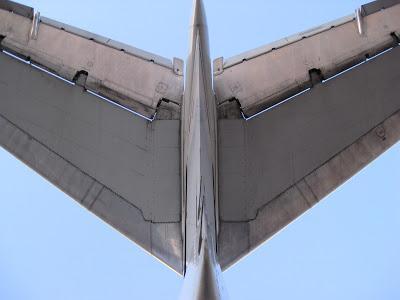
MD80 control tab.
So there you have it. Much more information about the MD80 than you probably ever wanted to know. The next time you’re standing in the terminal and notice someone looking at the tail of an MD80 with a perplexed look on his or her face...clue the poor soul in and save the pilot from another systems lesson.
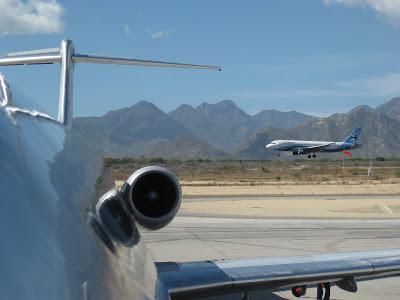
One up...one down. (on the ramp at San Jose Del Cabo)
**********
Want to know more about the MD80/DC9 series aircraft. Take a look at this web-site for a complete explanation of the differences.
Ultimate DC-9/MD-80/MD-90/MD-95 Guide
**********
And this post for a brief history of the DC9/MD80.
